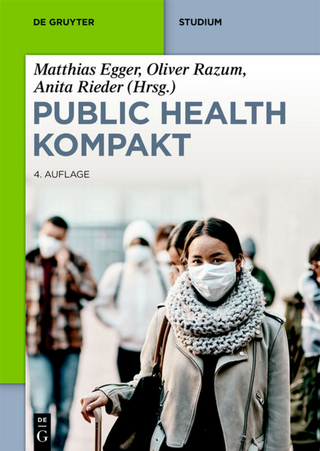
Chemical Mixtures and Combined Chemical and Nonchemical Stressors
Springer International Publishing (Verlag)
978-3-030-09617-5 (ISBN)
Dr. Cynthia Rider is a toxicologist with the National Toxicology Program, National Institute of Environmental Health Sciences, where she has been actively involved in mixtures research including work with polycyclic aromatic hydrocarbons and herbal products. She received her B.S. from Tulane University and her Ph.D. from North Carolina State University in Environmental Toxicology. She completed post-doctoral training in the Reproductive Toxicology Branch of the National Health and Environmental Effects Research Laboratory, U. S. Environmental Protection Agency (EPA) and the Nicholas School of the Environment at Duke University. Dr. Rider has been an active member of the mixtures community through reviewing papers, serving on an EPA panel on cumulative risk assessment of phthalates, and developing mixtures-related scientific program proposals for Society of Toxicology annual meetings. Jane Ellen Simmons is Chief of the Pharmacokinetics Branch, National Health and Environmental Effects Research Laboratory, US EPA. She received an MSPH in Environmental Management and Protection and a PhD in Toxicology from the Department of Environmental Sciences and Engineering, School of Public Health, University of North Carolina at Chapel Hill. Her research focus areas include: models, methods and approaches for both defined mixtures and environmentally realistic complex mixtures; integrating chemical and toxicological evaluations of chemical mixtures; and much more. She is a Diplomate of the American Board of Toxicology. She co-chaired the International Toxicology of Mixtures Conference and has served on the HiWate Science Advisory Board, on review panels for the Food and Drug Administration and North Carolina State University and Advisor to the US EPA RTP Chapter of the National Training Leadership Organization. Dr. Simmons has also authored more than 90 peer-reviewed journal articles and 15 book chapters and reports.
Introduction.- Combined exposures.-Measuring combined exposures.- Modeling complex exposures.-Prioritizing mixtures for study.- Environment-Wide Association Studies.- Biogeographical analysis of chemical co-occurrence.- Combining exposure and toxicity information to develop logical groupings for assessment.- Maximum Cumulative Ratio for deciding when to assess mixtures .- Establishing the "no interaction" baseline.- Dose addition models .- Response addition.- Integrated addition.- Mixture statistics - comparing predicted to observed.- Cumulative Risk Assessment.- Deciding which approach to use.- Component-based approaches.- Sufficient similarity of whole mixtures.- Other whole mixtures approaches .- Assessing interactions.- Likelihood and examples of chemical interactions.- PBPK modeling of chemical interactions.- Adding interactions to cumulative risk assessment.- Consideration of nonchemical stressors.- Toxicity and interactions of physical and chemical stressors.- Psychosocial and chemical stressors.- Adding nonchemical stressors to cumulative risk assessments.- Disease-based risk assessment.- Community-based risk assessment.
| Erscheinungsdatum | 05.03.2022 |
|---|---|
| Zusatzinfo | XIV, 556 p. 77 illus., 54 illus. in color. |
| Verlagsort | Cham |
| Sprache | englisch |
| Maße | 155 x 235 mm |
| Gewicht | 866 g |
| Themenwelt | Medizin / Pharmazie ► Medizinische Fachgebiete ► Arbeits- / Sozial- / Umweltmedizin |
| Medizin / Pharmazie ► Medizinische Fachgebiete ► Pharmakologie / Pharmakotherapie | |
| Medizin / Pharmazie ► Pharmazie | |
| Studium ► Querschnittsbereiche ► Epidemiologie / Med. Biometrie | |
| Schlagworte | Chemical interaction • combined exposures • Cumulative toxicology • Mixture model • Non-chemical stressor • risk assessment |
| ISBN-10 | 3-030-09617-3 / 3030096173 |
| ISBN-13 | 978-3-030-09617-5 / 9783030096175 |
| Zustand | Neuware |
| Informationen gemäß Produktsicherheitsverordnung (GPSR) | |
| Haben Sie eine Frage zum Produkt? |
aus dem Bereich


